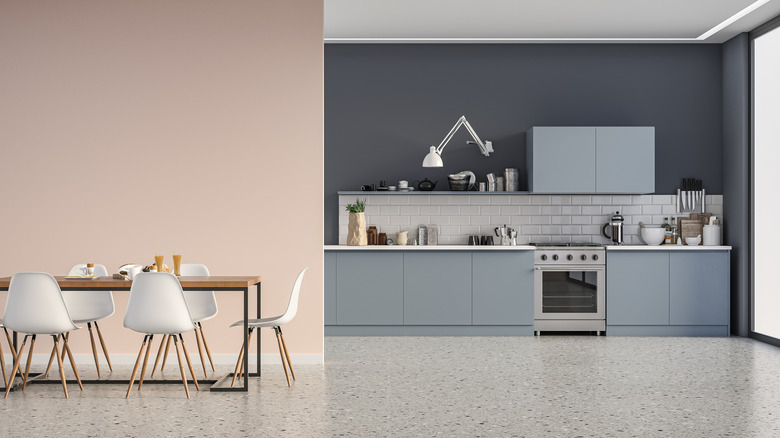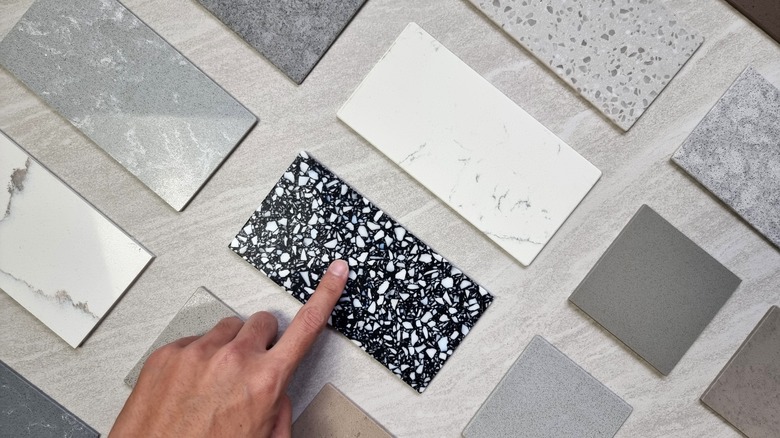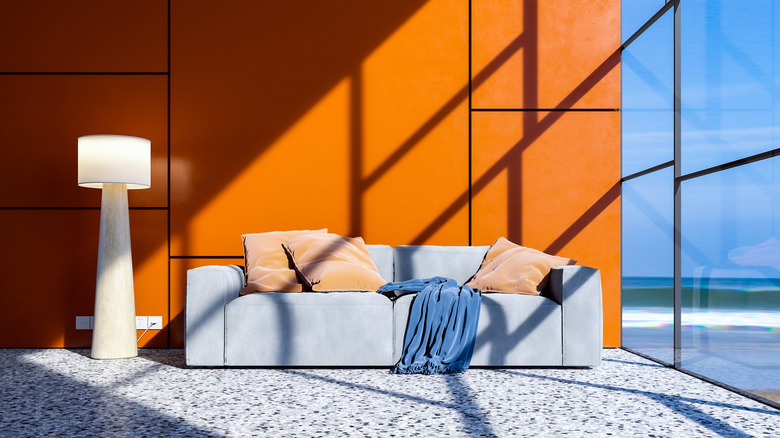The Drawbacks Of Selecting Terrazzo Flooring
If you're revamping your living space and considering terrazzo flooring, it's important to take a balanced view of the pros and cons. While terrazzo is visually arresting and adds a touch of sophistication to any room, it's essential to be aware of the financial responsibilities before giving in to its aesthetic allure. The material itself is on the pricier side, and you also need to consider its vulnerability to cracking. However, terrazzo does have its merits. Once the installation hurdles are crossed, you'll have a floor that boasts an impressively long lifespan, and maintenance becomes comparatively straightforward, reducing long-term hassles.
When choosing a flooring option, you want something that excels in both functionality and aesthetics while fitting within your budget. Therefore, before committing to terrazzo, which will be a permanent fixture in your home for years, perhaps even decades, consider the associated costs and challenges seriously. Are these potential downsides significant enough to be deal-breakers for you? Take time to carefully weigh all aspects to ensure that you choose the option that best suits your needs, lifestyle, and financial situation.
High initial cost and installation complexity
The most significant drawback of terrazzo flooring is the high initial cost. Basic aggregates alone can cost between $5 and $20 per square meter. If you prefer premium materials like marble or specialty glass, costs can skyrocket. Installation is also a crucial factor to consider. Terrazzo flooring cannot be installed as a DIY project, and it requires a skilled workforce well-versed in the labor-intensive and intricate process. The floor must be meticulously prepared, the terrazzo mixture must be poured and leveled with expertise, and the final product polished to a fine sheen. Each of these steps adds to the mounting labor costs, making terrazzo one of the most costly flooring options.
Before investing in terrazzo flooring, consider the long-term implications. Does its aesthetic and durability justify the steep initial costs? This becomes even more significant if you plan to sell your property. Will potential buyers view this flooring choice as a valuable asset or an expensive feature they might not be willing to pay extra for? Before making a decision, assess not only the immediate expenses but also the long-term financial ramifications of opting for terrazzo flooring.
Susceptibility to damage and maintenance requirements
Terrazzo floors are generally durable and can last for decades, but they are not entirely damage-resistant. Heavy objects falling onto the surface can chip or crack the terrazzo, requiring costly repairs. Additionally, maintenance for terrazzo floors is often advertised as hassle-free, usually requiring only a quick sweep or mop. However, over time, even with diligent daily cleaning, the initial lustrous shine tends to fade, requiring professional polishing to restore its original glory. This is not a simple or inexpensive weekend project, but rather a laborious and costly process that you'll need to budget for periodically.
The potential slippery nature of terrazzo floors is another aspect worth considering. This can be a particular safety hazard for homes with young children or elderly residents who are more vulnerable to slips and falls. To mitigate this risk, a non-slip sealer should be used during installation.
Terrazzo floors have the tendency to become uncomfortably cold, particularly during the winter months. Unlike carpet or some types of wood that have insulating properties, terrazzo doesn't retain heat well. This can be a significant downside if you enjoy the comfort of walking barefoot inside your home. If you live in a colder climate, this flooring choice could even compel you to invest in additional heating options like underfloor heating. While it might sound luxurious, it's another layer of installation complexity and cost, not to mention the ongoing impact on your energy bills.


